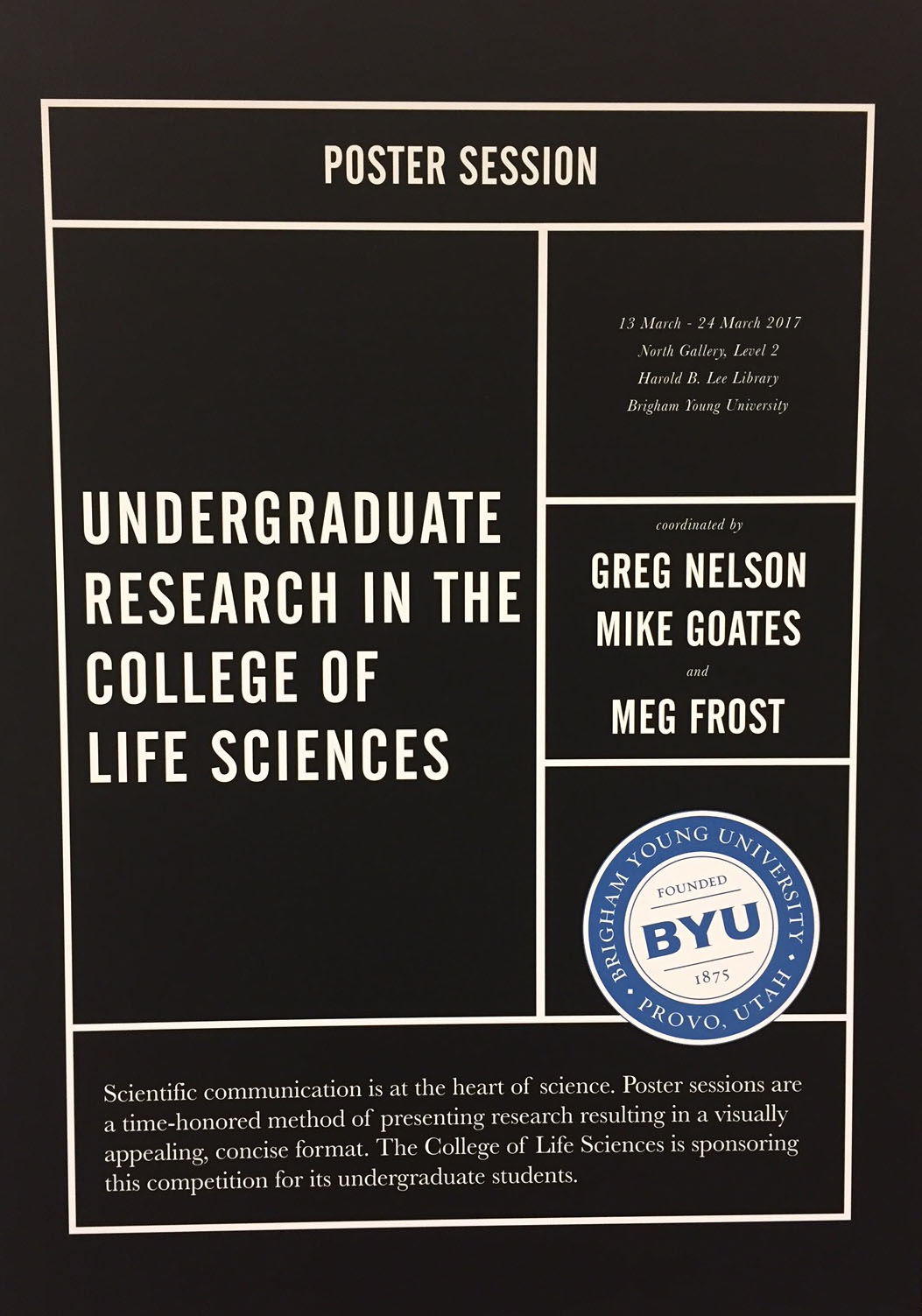Files
Download Full Text (1.5 MB)
Keywords
Bacteriophage, E. Coli, Pathogen-Host interaction, Electron Microscopy
Abstract
The extensive use of antibiotics since their discovery has led to the selection of antibiotic resistant pathogenic strains to become more common. This has increased the interest in bacteriophages to be used to fight these resistant bacteria. In Dr. McCleary's lab we have been investigating the relationship between Escherichia coli and some novel bacteriophage dependent on the ferrochrome hydroxamate transporter FhuA. These iron siderophore transporters allow E. coli to flourish in competitive low iron environments. Using an abundant transport protein such as FhuA likely confers an evolutionary advantage to phage that can target this with their receptor binding protein. This receptor serves as the target for various well studied phage such as Tl, T5, and Phi 80. These have helped us in characterizing novel phage isolated by members of our team. These are JLBYU37, JLBYU41, and JLBYU60. We have characterized the relationship between E.coli and these phage in multiple ways. We started by investigating what part of the FhuA protein was bound by each phage. To accomplish this tJ.fhuA tJ.waaC (LPS synthesis) and tJ.fhuA tJ.fepA (ferric enterobactin transporter) double knock out E. coli strains were constructed. A functioning FhuA encoding plasmid was transformed into a mutator strain, extracted and then transformed into E. coli (MG1655). The strains that were resistant to phage infection generally had a non-functional FhuA. In order to screen for functional FhuA, these phage resistant strains were plated on minimal iron agar with ferrochrome being the only source of iron. We also used site-directed mutagenesis to create modified FhuA proteins which replaced portions of the exposed loops with part of a loop from OmpF shown to not be targeted by FhuA dependent phage (Endriss et al.). We found that JLBYU37 and JLBYU60 are completely dependent on loop 8 and a reduced effectiveness with a loop 5 deletion. The Tl-like phage, JLBYU41, showed a reduced effectiveness when any single loop deletion was present, but JLBYU41 does not rely on any single loop. We now hypothesize that the loops are used to facilitate JLBYU41 binding to a region inside the FhuA barrel structure. Tests were also performed to show that JLBYU37 JLBYU41 and JLBYU 60 are non-lysogenic under normal as well as low nutrient stress environments. Our findings have shown that an in-depth understanding of phage-host interactions can help in the design of phage-based therapeutic agents that target vital bacterial receptors.
BYU ScholarsArchive Citation
Hansen, Colton B.; Lewis, Jessica M.; Janda, Kathryn E.; Bateman, Ian W.; and McCleary, William R., "Characterization of E. coli Specific, FhuA Dependent Bacteriophage" (2023). Library/Life Sciences Undergraduate Poster Competition 2023. 63.
https://scholarsarchive.byu.edu/library_studentposters_2023/63
Document Type
Poster
Publication Date
2023-02-23
Language
English
College
Life Sciences
Department
Microbiology and Molecular Biology


